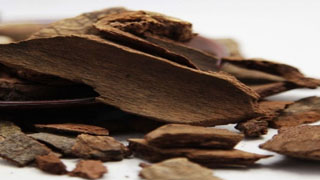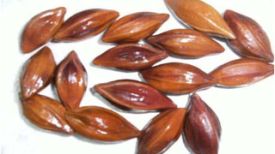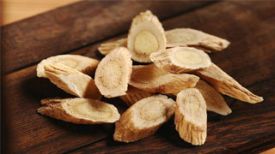
1. Alias
Maple bark, Nanning maple bark.
2. Plant morphology
Evergreen shrubs. 1-3 meters high, with a fragrant aroma throughout the plant. The root is cylindrical, with a dark reddish brown outer layer and a reddish brown inner layer. Leaves often gather at the top or nodes with 3-5 leaves; Leaves are leathery or thick leathery, glossy, lanceolate, oblong or ovoid in shape, with a short pointed tip and a wedge-shaped or broadly wedge-shaped base, entire margin. Red flowers, solitary or 2-4 clustered at the top of branches or axillary; Flower quilt slices 15-20; 21-23 stamens; When flowering, the carpel is often 13, detached, arranged in a circular pattern, and curved at the top. Aggregated fruits are often composed of 9-11 sunflower seeds. The seeds are flattened ovate, yellow, and shiny. The flowering period is from April to May, and the fruiting period is from August to September.
3. Origin distribution
Born in sparse forests on limestone mountains. Distributed in the southwest of Guangxi.
4. Harvesting and processing
Peel the bark in spring and autumn and dry it in the sun.
5. Characteristics of medicinal herbs
Roll shaped or groove shaped, measuring 5-15 centimeters in length, 1-4 centimeters in diameter, and 0.2-0.3 centimeters in thickness. The outer surface is gray brown to dark brown, with some visible gray white lichen spots. The rough skin is easy to peel off or detach, and the detached area is brownish red. The inner surface is brown or brownish red, with obvious fine longitudinal wrinkles. Crispy texture, easy to break, granular cross-section. The aroma is slightly fragrant and the taste is slightly astringent.
6. Sexual Taste Returning to the Classics
Warm in nature, astringent in taste, slightly spicy, and slightly toxic. Return to the bladder meridian and kidney meridian.
7. Effect and Function
Eliminate wind and dampness, promote qi circulation and relieve pain. Belonging to the subcategory of wind dampness dispelling drugs, it is a strong muscle and bone dispelling medicine.
8. Clinical application
Take 6-9 grams and decoct in water. Used to treat rheumatism and pain, as well as lumbar muscle strain.
9. Pharmacological research
The results of the analgesic experiment showed that maple bark can significantly inhibit the twisting reaction caused by acetic acid in mice and increase the percentage of pain valves in mice to light radiation heat.
10. Chemical composition
Containing volatile oils, mainly including 44 compounds such as α - pinene, β - pinene, camphene, etc. In addition, it contains components such as quercetin, 6-p-tocoumaroyl glucoside, camphorene, 1,8-eucalyptol, linalool, safrole ether, camphor, bornyl acetate, and myrcene.
11. Usage taboos
Pregnant women should take it with caution.
12. Compatibility prescription
① Treating qi stagnation and abdominal pain: 10g of maple bark. Chop, pan fry, remove residue, extract juice, and take warm. One dose per day, one month is one course of treatment.
② Treating rheumatism and ringworm pain: appropriate amount of maple bark. Boil in water, check, extract juice, and clean the affected area with medication. No matter when.
⊙ The content of the article is for clinical reference only. Non TCM professionals are not allowed to test drugs.


